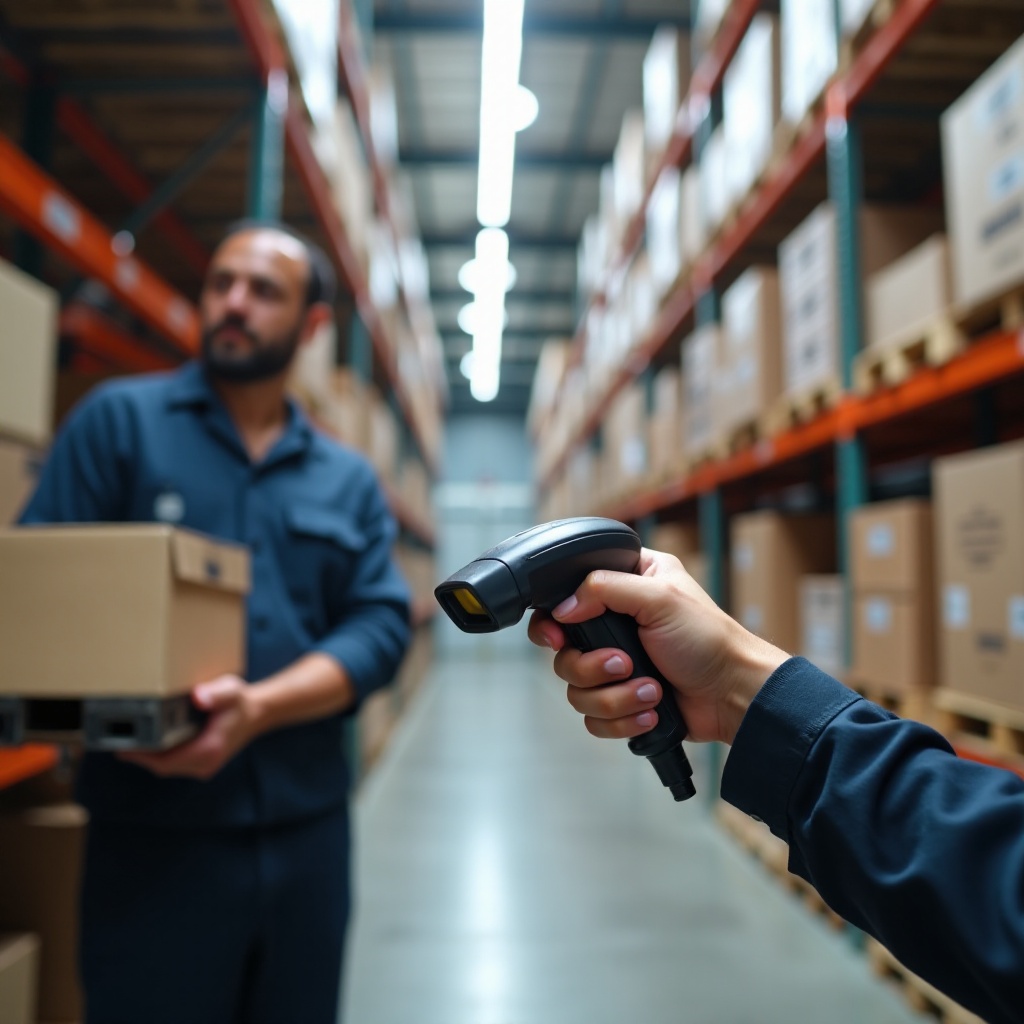Introduction
Managing inventory efficiently is crucial for the success of any business that deals with physical goods. Implementing the right tools can streamline processes, reduce errors, and enhance overall productivity. Barcode scanners are among the most effective tools for improving inventory management. They offer a fast, accurate method for tracking products and integrating with inventory systems. This guide explores everything you need to know about choosing and using barcode scanners for your business.

What are Barcode Scanners?
Barcode scanners are electronic devices used to read printed barcodes. By converting visual information into digital data, these devices help automate inventory tracking and other tasks. Scanners work by illuminating the barcode with a red light, and a sensor detects the light reflected back from the barcode. This reflected light is then converted into an electrical signal, processed by a decoder, and output as digital data.
There are various types of barcode scanners including laser scanners, charge-coupled device (CCD) scanners, and image scanners. Laser scanners read barcodes at greater distances due to their laser light source. CCD scanners capture barcode images through an array of tiny light sensors. Image scanners, on the other hand, use a small camera to take a snapshot of the barcode and decode it.
Benefits of Using Barcode Scanners in Inventory Management
Barcode scanners offer numerous advantages for inventory management. Here are some of the key benefits:
-
Accuracy and Efficiency: Barcode scanners dramatically reduce human errors associated with manual data entry. Scanning barcodes ensures that the correct information is captured quickly and accurately.
-
Time-Saving: Inventory tasks such as counting stock, tracking shipments, or checking prices become faster with barcode scanners. This time efficiency translates to cost savings and allows staff to focus on other critical tasks.
-
Real-Time Data: When integrated with inventory management systems, barcode scanners provide real-time data updates. This real-time capability helps businesses keep an accurate count of their inventory, preventing overstocking or stockouts.
-
Improved Order Processing: Faster and more accurate data collection speeds up the order fulfillment process, enhancing overall customer satisfaction. Orders are processed quicker, and the chances of sending incorrect items are minimized.
-
Enhanced Productivity: Automating inventory tasks with barcode scanners increases workforce productivity. Staff can perform duties more efficiently without repetitive manual entry, contributing to higher operational efficiency.

How to Choose the Right Barcode Scanner for Your Business
Selecting the appropriate barcode scanner for your business requires considering several factors. Here’s how you can make an informed choice:
-
Type of Barcode: Determine whether you need to scan 1D or 2D barcodes. 1D barcodes are traditional barcodes found on most consumer products, while 2D barcodes, like QR codes, contain more data and are increasingly used in various industries.
-
Environment: Consider the environment where the scanner will be used. Rugged scanners are ideal for warehouses or industrial settings, as they can withstand harsh conditions. For retail or office environments, less rugged models may suffice.
-
Connectivity: Barcode scanners offer different connectivity options such as USB, Bluetooth, and wireless. Choose a connectivity option that integrates seamlessly with your existing systems and suits your mobility requirements.
-
Scanning Volume: For businesses with high scanning volumes, an ergonomic scanner with a fast read rate is crucial. Ensure the scanner can handle the workload without causing user fatigue.
-
Budget: While it’s essential to get a scanner that meets your needs, consider the investment against your budget. High-end models offer more features, but there are cost-effective options that still provide excellent performance.

Top Features to Look for in Barcode Scanners
When evaluating barcode scanners, keep an eye out for these valuable features:
-
Scanning Capability: Confirm that the scanner can read the types of barcodes you use. A versatile scanner that reads both 1D and 2D barcodes might be advantageous for future applications.
-
Durability: If the scanner will be used in a rugged environment, ensure it has protective features against dust, moisture, and drops. Check for an Ingress Protection (IP) rating to gauge its durability.
-
Ease of Use: A user-friendly interface and ergonomic design can enhance the user experience. Look for scanners that are comfortable to hold and easy to operate for extended periods.
-
Decoding Speed and Accuracy: High decoding speed and accuracy are essential for efficient operation. Evaluate scanner performance in various lighting conditions and barcode conditions (e.g., partially damaged barcodes).
-
Battery Life: For wireless or mobile scanners, long battery life is critical. Choose a scanner that offers sustainable power for daily operations to prevent interruptions.
Implementation Tips for Barcode Scanners
Once you’ve chosen the right barcode scanner, proper implementation is key:
-
Training: Provide comprehensive training to your staff on how to use the barcode scanner correctly. This ensures they can operate the devices efficiently and troubleshoot minor issues independently.
-
Integration: Integrate the barcode scanner with your existing inventory management system or software to take full advantage of real-time data and automation capabilities.
-
Testing: Conduct thorough testing before full-scale deployment. Check the scanner’s performance in different conditions and ensure all systems are working seamlessly.
-
Maintenance: Regularly maintain the scanners to extend their lifespan. Clean the lens and check for updates to the scanning software to keep the devices performing optimally.
Conclusion
Barcode scanners are indispensable tools for modern inventory management, offering myriad benefits such as improved accuracy, efficiency, real-time data capabilities, and enhanced productivity. Choosing the right scanner involves evaluating factors like the type of barcode, environment, connectivity, and budget. Look for key features like scanning capability, durability, ease of use, decoding speed, and battery life. Implementing your barcode scanners effectively with proper training, integration, and maintenance will help maximize the return on your investment.
Frequently Asked Questions
What types of barcode scanners are best for inventory management?
The best barcode scanner type depends on your specific needs. For high-volume scanning in a retail environment, an omnidirectional laser scanner might be most suitable. In industrial settings, rugged scanners with 2D barcode capabilities could be more appropriate.
Can barcode scanners be integrated with existing inventory systems?
Yes, most modern barcode scanners can be integrated with existing inventory management systems. It’s important to ensure compatibility and possibly work with software providers to facilitate smooth integration.
How do barcode scanners improve inventory accuracy?
Barcode scanners eliminate human errors associated with manual data entry by automatically capturing and recording information. This automatic data capture ensures that inventory records are accurate, helping maintain an up-to-date inventory count.

